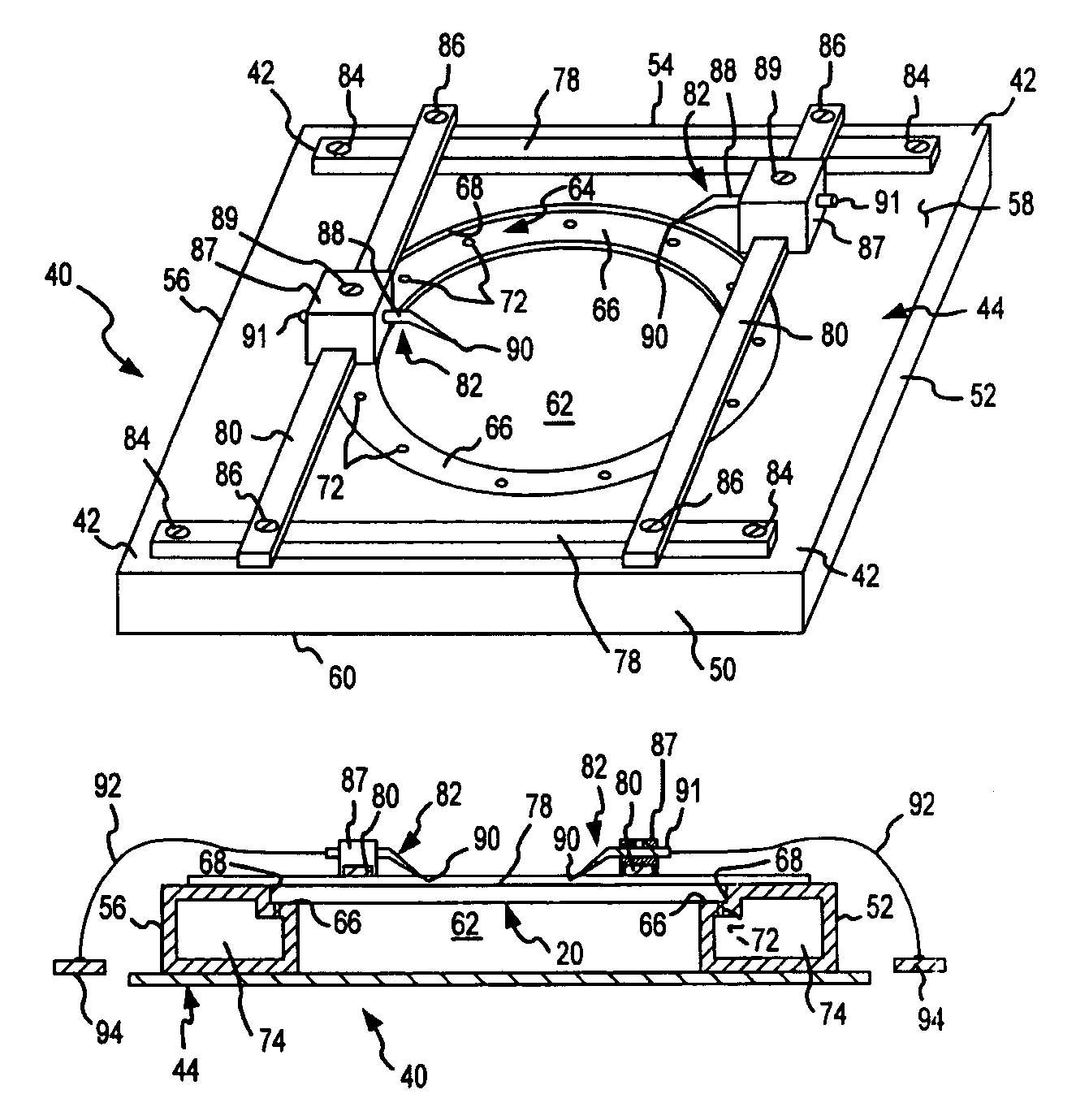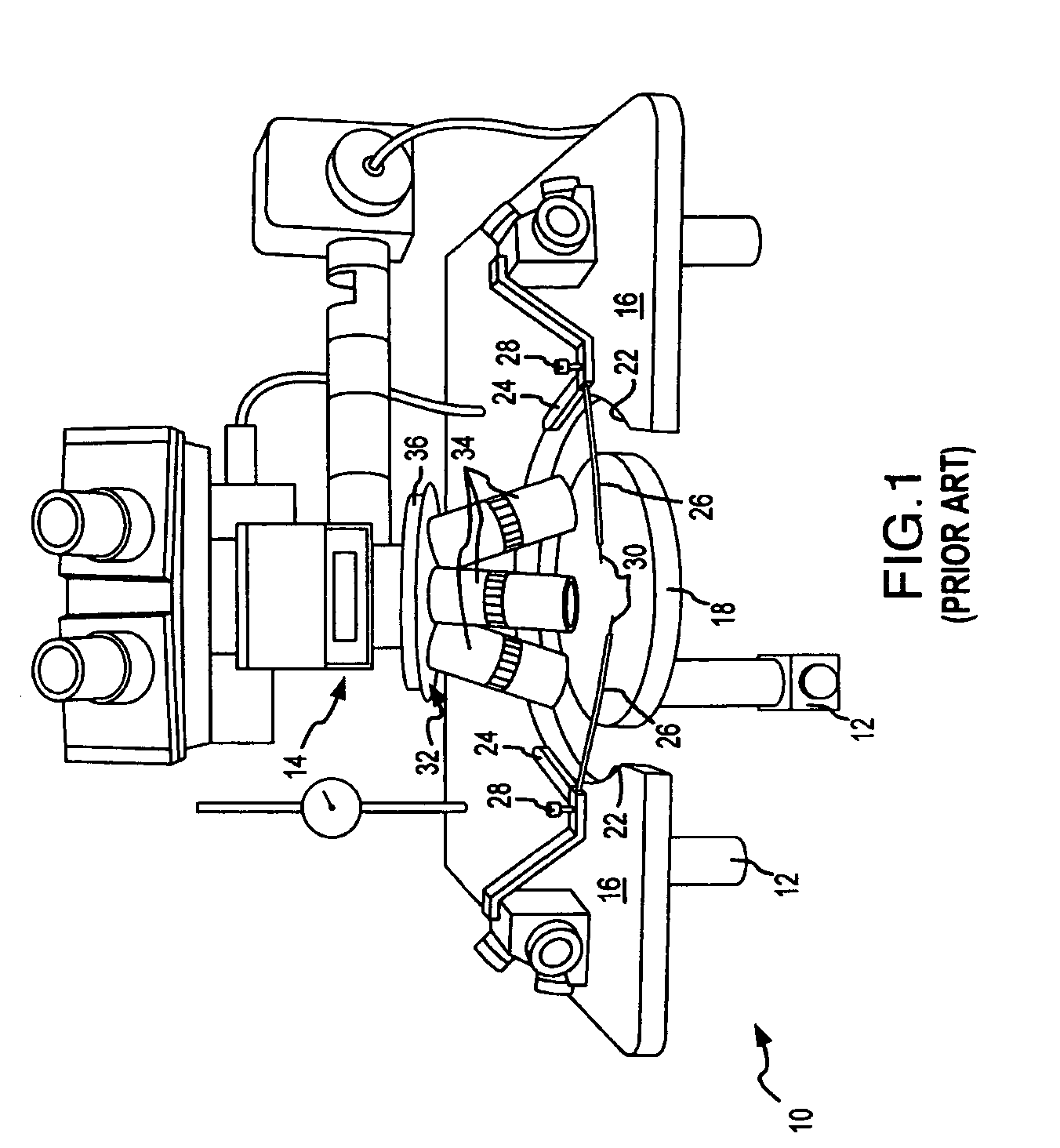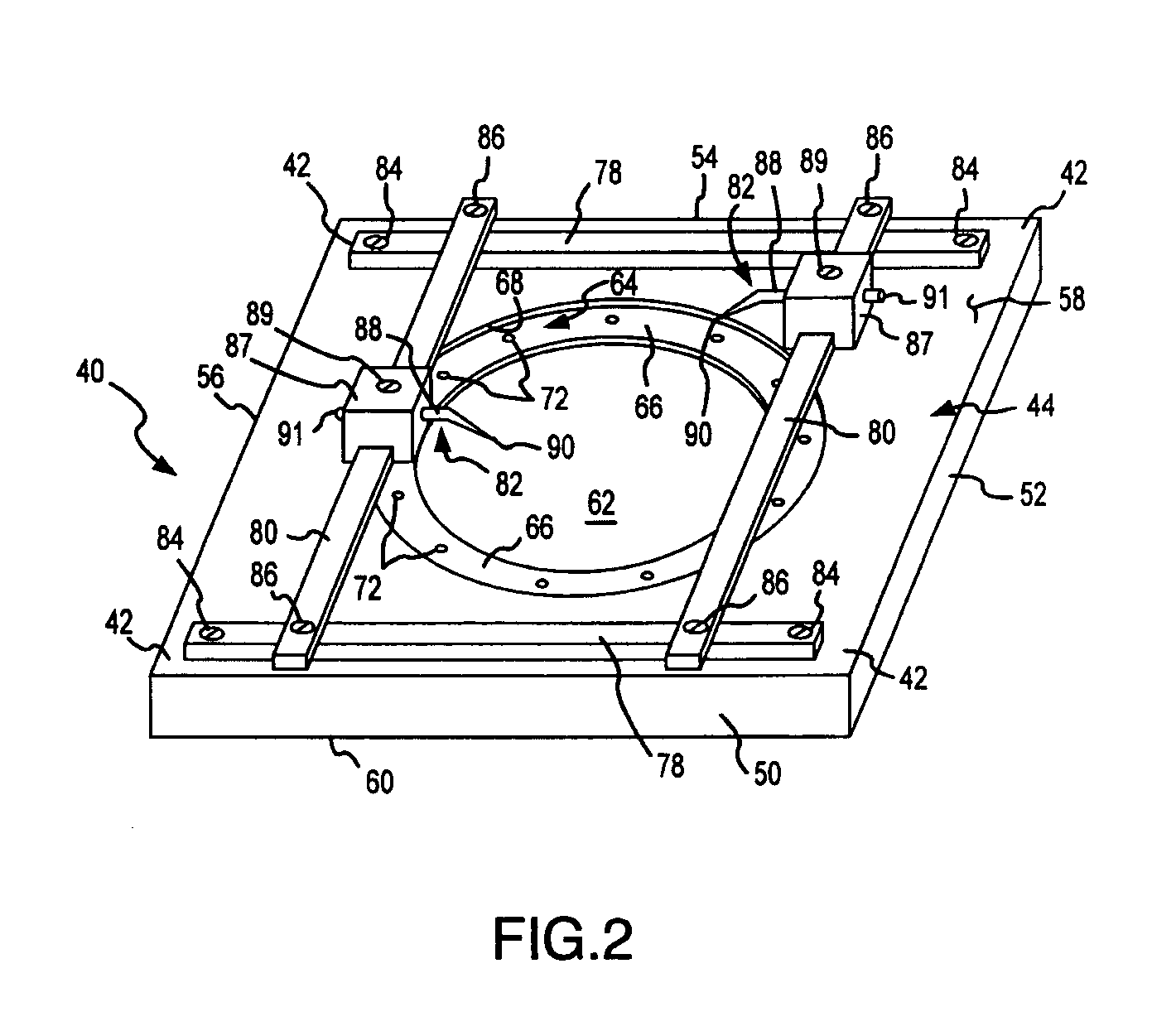Method for probing a semiconductor wafer
a technology for semiconductor wafers and probes, applied in individual semiconductor device testing, semiconductor/solid-state device testing/measurement, instruments, etc., can solve problems such as latching, junction defects, and generation of photo emission, so as to avoid reverse or unnatural images of the wafers, avoid difficulties, and reduce the time required
- Summary
- Abstract
- Description
- Claims
- Application Information
AI Technical Summary
Benefits of technology
Problems solved by technology
Method used
Image
Examples
Embodiment Construction
[0021]A typical test station 10 is shown in FIG. 1 to include frame structure 12 which supports and positions a microscope 14, a platen 16 and a chuck 18 to hold a wafer 20 (FIGS. 4 and 5) which is undergoing testing or analysis. The platen 16 has a circular opening 22 for the chuck 18 to move toward and away from a turret 24 of the microscope 141 though the platen 16. The wafers 20 and other devices such as printed circuit boards, typically referred to as the device under test (DUT) are connected to the chuck 18 or to the platen 16. The circular opening 22 is sized to permit wafers 20 and other printed circuit boards (not shown) to be attached to the platen 16 and to be positioned relative to the microscope 14 for convenient observation. Both the platen 16 and the chuck 18 typically move independently. The chuck 18 and the microscope 14 typically move in the X, Y, and Z directions. The platen 16 typically moves only in the Z direction.
[0022]Probes 24 are typically connected to the ...
PUM
| Property | Measurement | Unit |
|---|---|---|
| power | aaaaa | aaaaa |
| photoemission detection microscope | aaaaa | aaaaa |
| pressure | aaaaa | aaaaa |
Abstract
Description
Claims
Application Information
 Login to View More
Login to View More - R&D
- Intellectual Property
- Life Sciences
- Materials
- Tech Scout
- Unparalleled Data Quality
- Higher Quality Content
- 60% Fewer Hallucinations
Browse by: Latest US Patents, China's latest patents, Technical Efficacy Thesaurus, Application Domain, Technology Topic, Popular Technical Reports.
© 2025 PatSnap. All rights reserved.Legal|Privacy policy|Modern Slavery Act Transparency Statement|Sitemap|About US| Contact US: help@patsnap.com



